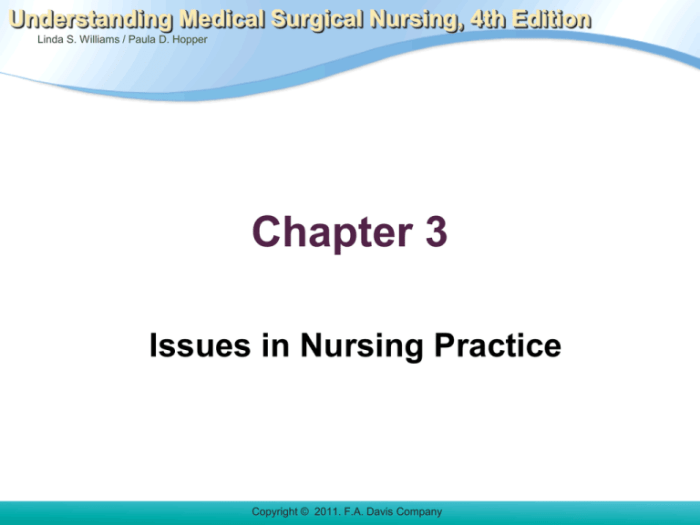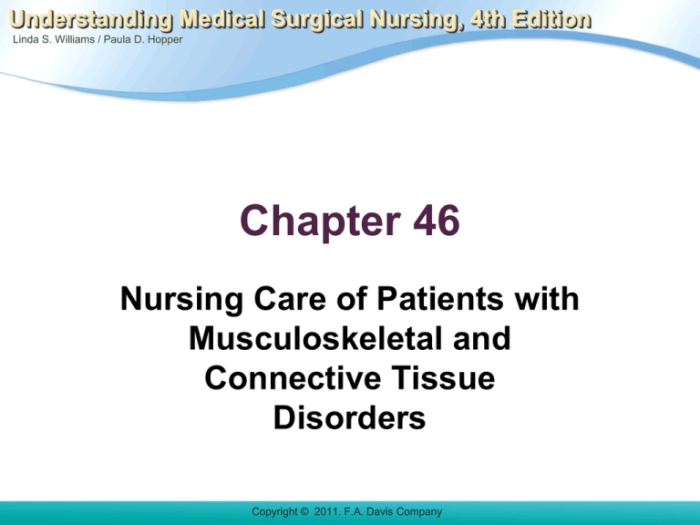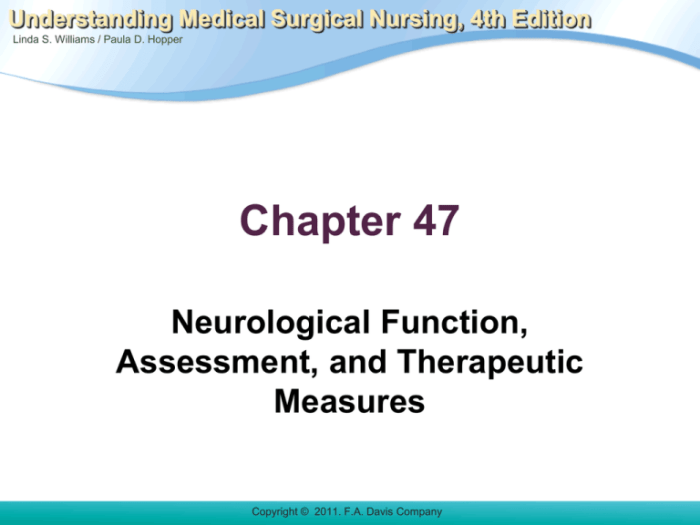Delve into the depths of medical-surgical nursing with Understanding Medical-Surgical Nursing 6th Edition Workbook Answers PDF, an invaluable resource designed to empower students with a comprehensive understanding of this dynamic field. This meticulously crafted workbook offers a wealth of knowledge, engaging exercises, and practical insights, making it an indispensable companion for aspiring nurses.
Through its well-organized chapters and evidence-based content, this workbook provides a solid foundation in medical-surgical nursing principles. Explore key concepts, master essential skills, and gain a deeper understanding of the latest advancements in the field, ensuring you are well-equipped to provide exceptional patient care.
Overview of Understanding Medical-Surgical Nursing 6th Edition Workbook

The Understanding Medical-Surgical Nursing 6th Edition Workbook is a comprehensive learning resource designed to accompany the Understanding Medical-Surgical Nursing 6th Edition textbook. The workbook provides a variety of exercises and activities to help students reinforce the concepts and skills covered in the textbook.
The workbook is organized into 12 chapters, each of which corresponds to a chapter in the textbook. The chapters cover a wide range of topics, including patient assessment, medical-surgical interventions, and nursing care plans.
The workbook exercises and activities are designed to help students develop critical thinking skills, problem-solving skills, and clinical judgment. The exercises and activities also help students to apply the concepts and skills they have learned to real-world nursing situations.
Content Analysis of Workbook Chapters
Chapter 1: Introduction to Medical-Surgical Nursing
This chapter provides an overview of the role of the medical-surgical nurse. It also covers the concepts of health and illness, and the nursing process.
Chapter 2: Patient Assessment, Understanding medical-surgical nursing 6th edition workbook answers pdf
This chapter covers the principles of patient assessment, including the techniques of physical examination and history taking. It also discusses the importance of cultural competence in patient assessment.
Chapter 3: Medical-Surgical Interventions
This chapter covers a wide range of medical-surgical interventions, including medication administration, wound care, and fluid and electrolyte management. It also discusses the principles of patient safety.
Chapter 4: Nursing Care Plans
This chapter covers the principles of nursing care planning, including the development of nursing diagnoses, goals, and interventions. It also discusses the importance of patient education in nursing care planning.
Chapter 5: Cardiovascular Disorders
This chapter covers the pathophysiology, clinical manifestations, and nursing management of cardiovascular disorders, including coronary artery disease, heart failure, and hypertension.
Chapter 6: Respiratory Disorders
This chapter covers the pathophysiology, clinical manifestations, and nursing management of respiratory disorders, including pneumonia, chronic obstructive pulmonary disease (COPD), and asthma.
Chapter 7: Gastrointestinal Disorders
This chapter covers the pathophysiology, clinical manifestations, and nursing management of gastrointestinal disorders, including peptic ulcer disease, inflammatory bowel disease, and pancreatitis.
Chapter 8: Genitourinary Disorders
This chapter covers the pathophysiology, clinical manifestations, and nursing management of genitourinary disorders, including urinary tract infections, sexually transmitted infections (STIs), and renal failure.
Chapter 9: Endocrine Disorders
This chapter covers the pathophysiology, clinical manifestations, and nursing management of endocrine disorders, including diabetes mellitus, thyroid disorders, and adrenal disorders.
Chapter 10: Musculoskeletal Disorders
This chapter covers the pathophysiology, clinical manifestations, and nursing management of musculoskeletal disorders, including arthritis, osteoporosis, and fractures.
Chapter 11: Neurological Disorders
This chapter covers the pathophysiology, clinical manifestations, and nursing management of neurological disorders, including stroke, Alzheimer’s disease, and Parkinson’s disease.
Chapter 12: Psychiatric Disorders
This chapter covers the pathophysiology, clinical manifestations, and nursing management of psychiatric disorders, including depression, anxiety, and schizophrenia.
Assessment of Workbook Exercises and Activities: Understanding Medical-surgical Nursing 6th Edition Workbook Answers Pdf

The exercises and activities in the Understanding Medical-Surgical Nursing 6th Edition Workbook are effective in reinforcing the concepts and skills covered in the textbook. The exercises and activities are varied and range from multiple-choice questions to case studies. The exercises and activities also provide opportunities for students to apply the concepts and skills they have learned to real-world nursing situations.
One of the strengths of the workbook is the inclusion of case studies. The case studies are based on real-world nursing situations and provide students with an opportunity to apply the concepts and skills they have learned to a real-world setting.
The case studies also help students to develop critical thinking skills and problem-solving skills.
Another strength of the workbook is the variety of exercises and activities. The exercises and activities include multiple-choice questions, true/false questions, short answer questions, and case studies. This variety of exercises and activities helps to keep students engaged and motivated.
One suggestion for improving the workbook would be to include more interactive exercises and activities. For example, the workbook could include simulations or role-playing exercises. These types of exercises and activities would help students to develop their clinical judgment and communication skills.
Evaluation of Workbook as a Learning Resource

The Understanding Medical-Surgical Nursing 6th Edition Workbook is an excellent learning resource for medical-surgical nursing students. The workbook is well-organized and provides a variety of exercises and activities to help students reinforce the concepts and skills covered in the textbook.
The workbook also provides opportunities for students to apply the concepts and skills they have learned to real-world nursing situations.
One of the strengths of the workbook is its clarity. The exercises and activities are clearly written and easy to understand. The workbook also provides clear explanations of the concepts and skills covered in the textbook.
Another strength of the workbook is its accuracy. The exercises and activities are based on current nursing practice and evidence-based guidelines. The workbook also provides accurate information about the pathophysiology, clinical manifestations, and nursing management of medical-surgical disorders.
One suggestion for improving the workbook would be to include more interactive exercises and activities. For example, the workbook could include simulations or role-playing exercises. These types of exercises and activities would help students to develop their clinical judgment and communication skills.
Clarifying Questions
What is the purpose of Understanding Medical-Surgical Nursing 6th Edition Workbook Answers PDF?
This workbook serves as a comprehensive guide for medical-surgical nursing students, providing a deep understanding of key concepts, essential skills, and current practices in the field.
How is the workbook structured?
The workbook is organized into chapters, each focusing on a specific aspect of medical-surgical nursing. It follows a logical progression, building upon knowledge and skills as you advance through the chapters.
What are the key features of the workbook?
The workbook includes engaging exercises, case studies, and reflective activities to reinforce learning. It also provides access to online resources, such as videos and simulations, to enhance the learning experience.
